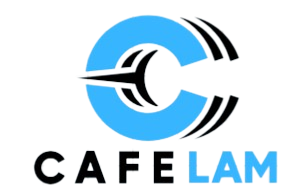Managing an extensive collection of LEGO sets requires a well-organized plan to track and store inventory efficiently. A systematic approach to monitoring and maintaining conditions is crucial whether you’re a distributor or store owner. This guide will provide insights into setting up a warehouse, selecting suitable software, and storing LEGO wholesale sets.
The Importance of Effective Inventory Management
Proper inventory management keeps your LEGO collection in top shape, ensuring you never run out of favorites and delivering speedy order fulfillment. It also saves on storage and reduces waste.
Warehouse Organization Strategies
1. Categorize LEGO Sets
Organize LEGO sets by themes, product lines, or release dates to streamline storage and retrieval.
Some examples include LEGO City, LEGO Technic, and LEGO Friends. Seasonal sets like holiday collections, limited editions, or exclusive sets are also available.
2. Implement Zoning Systems
Divide the warehouse into zones for quick access to high-demand products.
- High-Turnover Zone: Place popular or frequently sold items here.
- Seasonal Zone: Dedicate space for sets with seasonal demand.
- Long-Term Storage Zone: Store less popular or collectible items in a secure, low-traffic area.
3. Labeling and Shelving
Use clear labeling and standardized shelving systems for efficient inventory management.
- Label shelves and bins with product names, SKUs, or barcodes.
- Utilize adjustable shelves to accommodate varying box sizes.
Inventory Software Solutions
1. Barcode and RFID Technology
Incorporate barcode scanners or RFID systems to track inventory in real time.
- Advantages:
- Instant stock updates.
- Reduced human errors.
2. Inventory Management Software
Invest in software tailored for inventory tracking and reporting. Popular options include:
- TradeGecko: Designed for wholesalers who manage multi-location inventory.
- Zoho Inventory: Affordable and user-friendly for small to mid-sized businesses.
- NetSuite: Comprehensive solution for more extensive operations.
3. Real-Time Analytics
Leverage analytics tools to:
- Monitor stock levels and identify slow-moving items.
- Forecast demand for specific LEGO sets based on sales trends.
Proper Storage Conditions
Maintaining the quality of LEGO sets involves storing them in optimal conditions:
1. Temperature and Humidity Control
- Store LEGO sets in a calm, dry environment to prevent box warping and moisture damage.
- Ideal conditions: 50°F to 80°F (10°C to 27°C) with humidity levels below 60%.
2. Avoid Direct Sunlight
- UV exposure can fade box colors and compromise packaging integrity.
3. Pest Protection
- Seal storage areas to prevent infestation.
- Use pest control measures such as traps or sprays in warehouses.
4. Proper Stacking Techniques
- Avoid overstacking boxes to prevent crushing.
- Use shelving units to distribute weight evenly.
Tips for Large-Scale Operations
Of course, the first important part is to conduct regular audits to verify stock levels and identify discrepancies. Set alerts for low stock levels using software. Also consider cross-docking for high-demand products to reduce storage time and delivery time. Lastly, inspect LEGO boxes that remain unsold periodically to ensure they remain pristine.
Key Takeaways
Keeping track of inventory and storing LEGO sets properly is crucial for businesses that sell many sets. Using software and organizing the warehouse efficiently ensures sets remain in great shape, streamlines operations, and meets customer needs. This approach saves money, simplifies processes, and maintains set conditions, providing customers with an exceptional experience.







